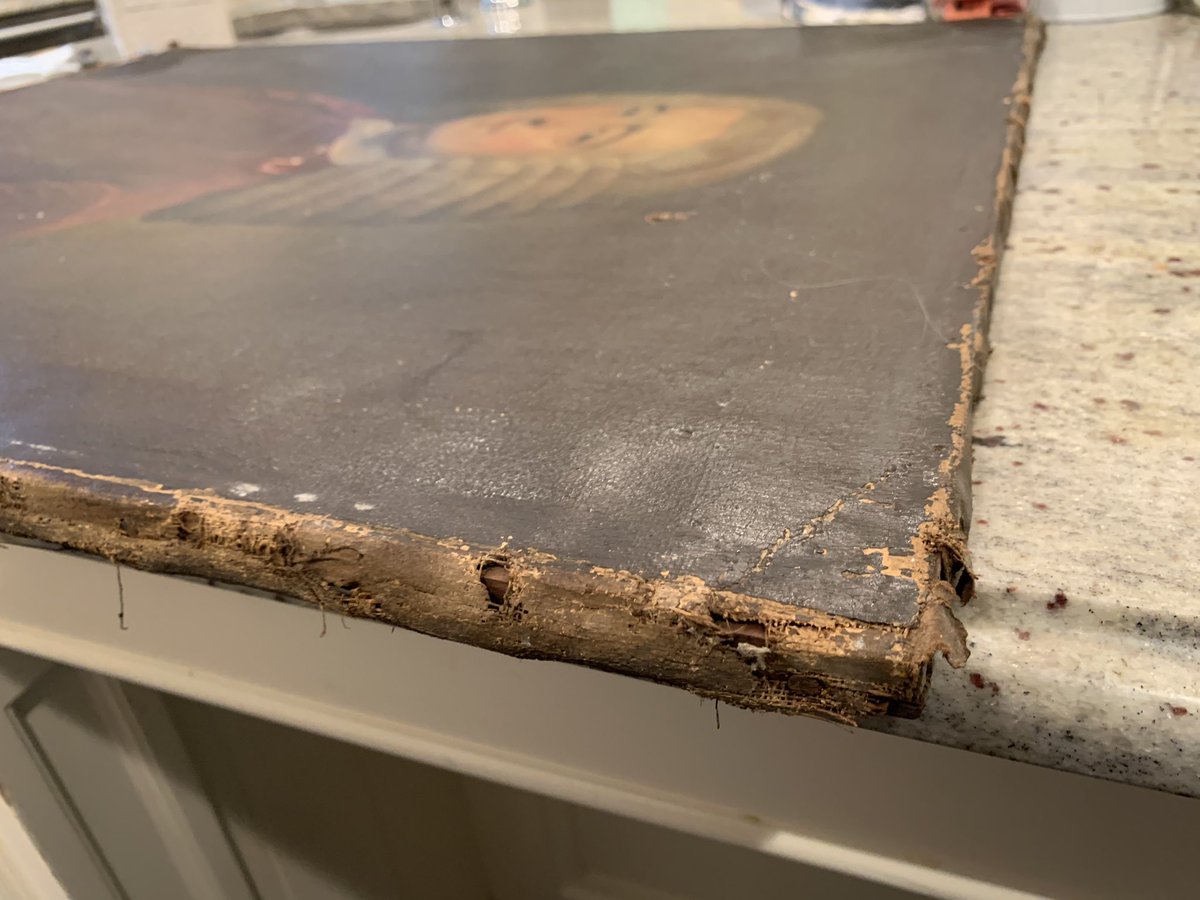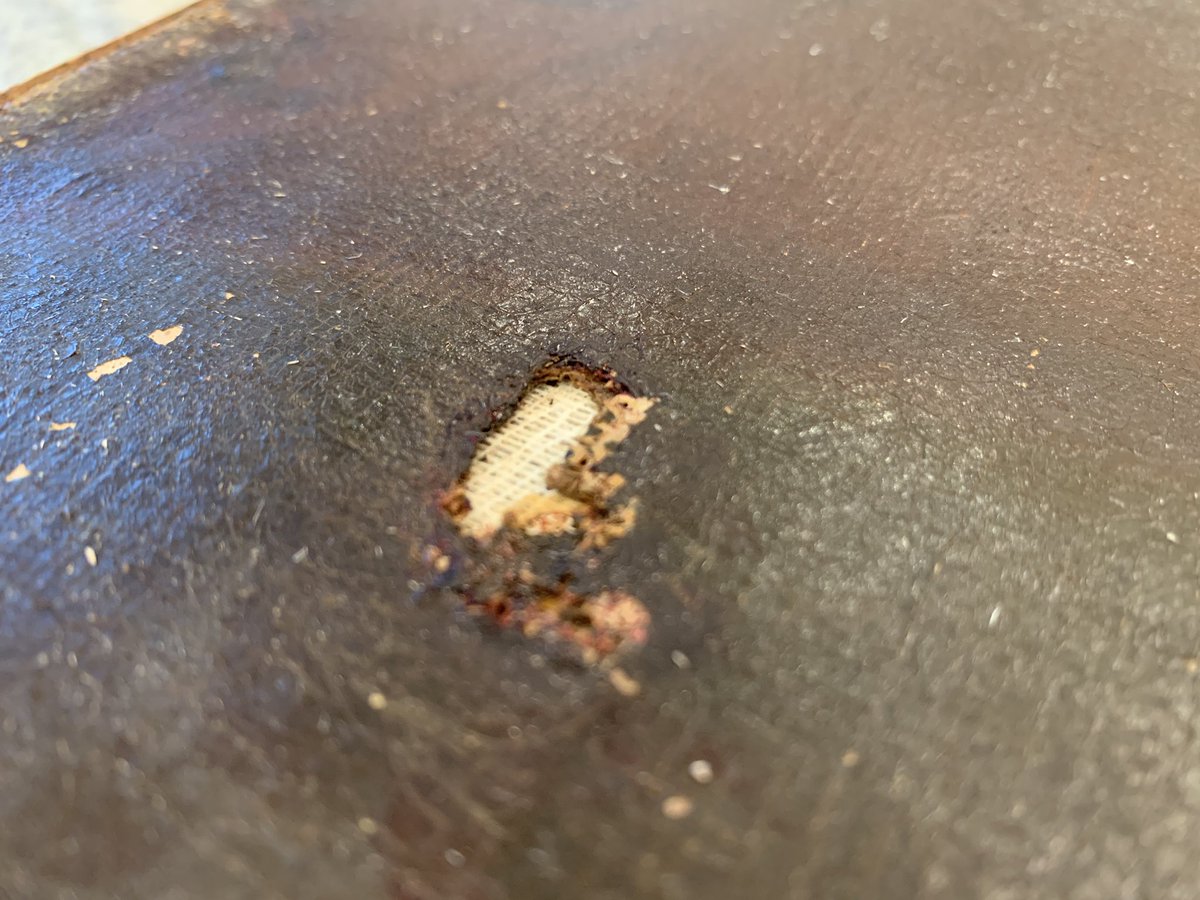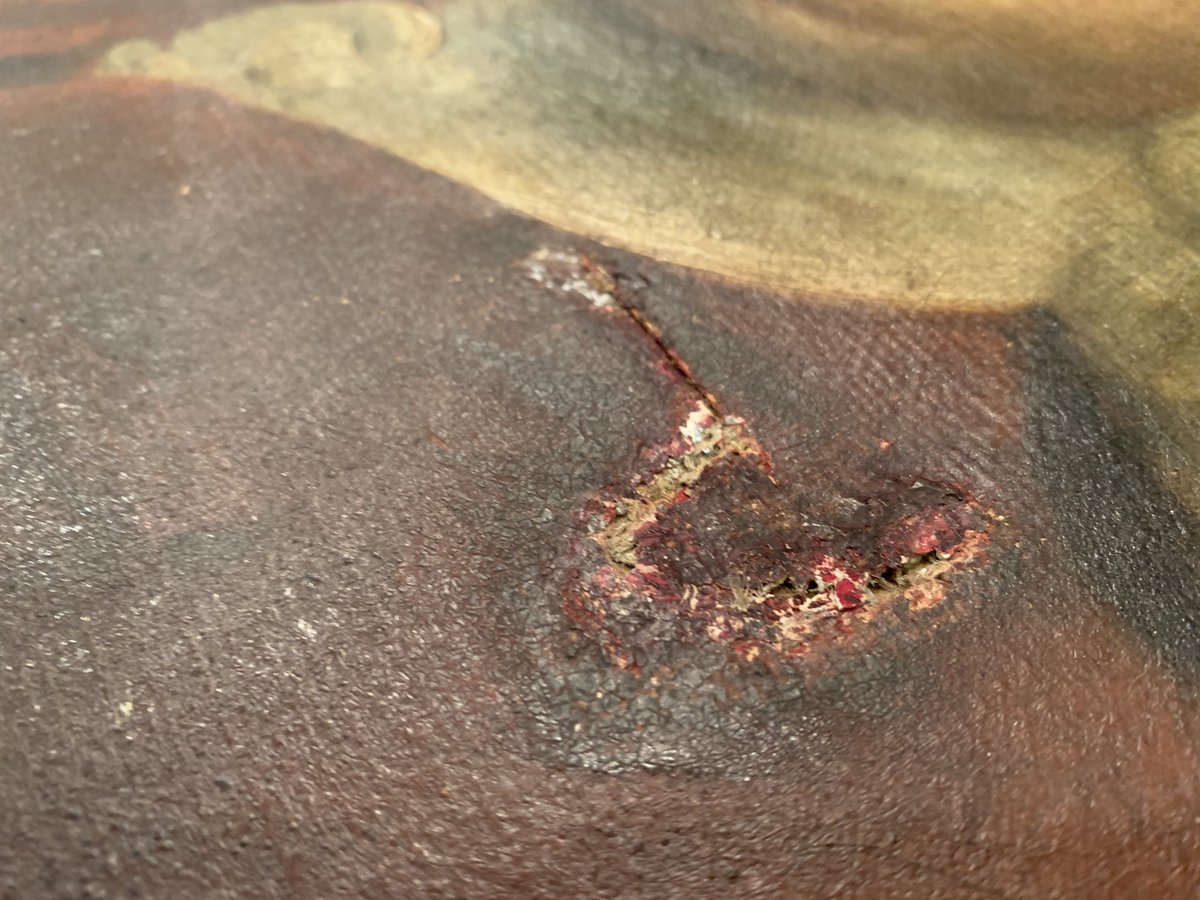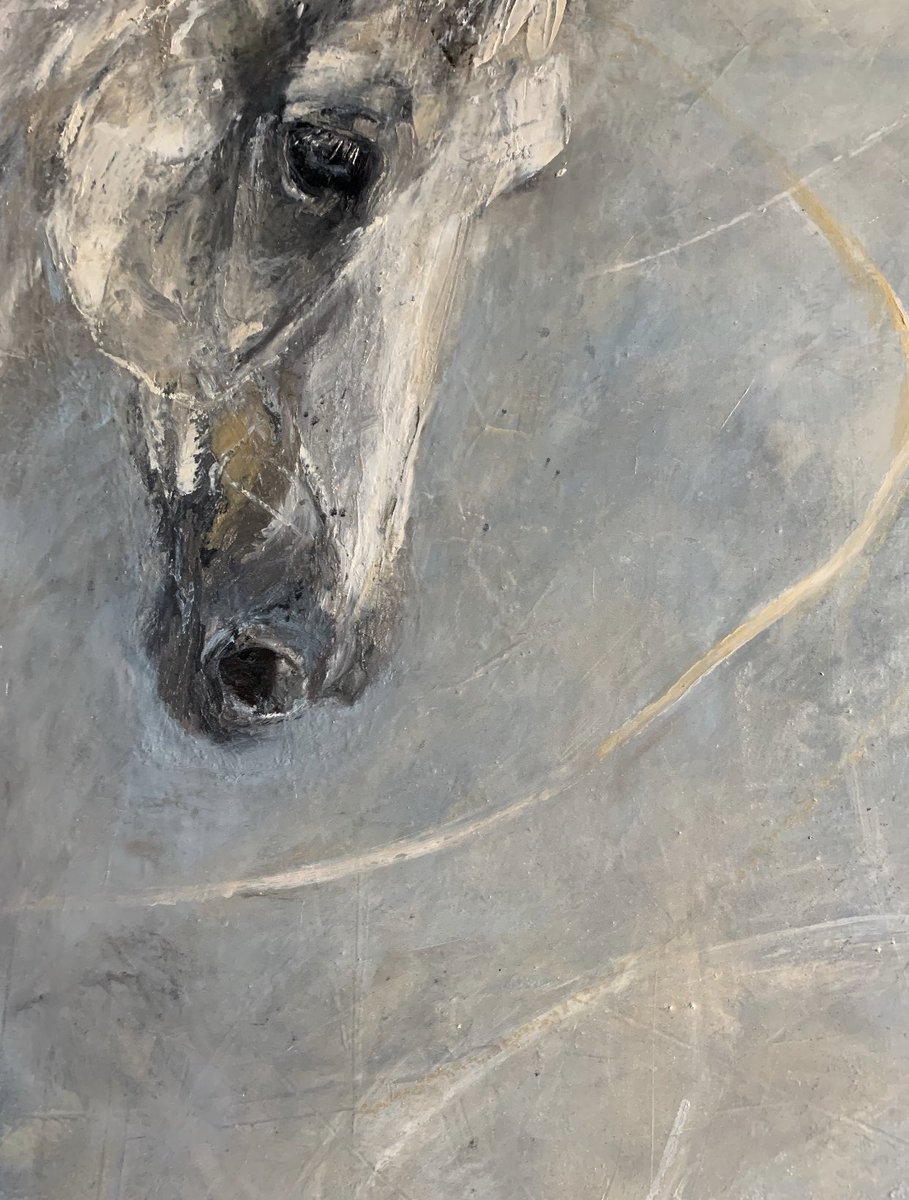There are tears and holes in the canvas and missing paint.
Art restoration brings together my love of restoring things to vitality, painting, science and woodworking / cabinetry making.




I have a different philosophy: I want my pieces to retain the patina of being 300 years old. There is a beautiful soft yellow brown tone and the colors are muted, not bright.




















